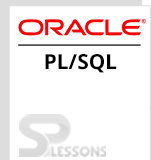 Description
Description
 Description
Description
Arithmetic PLSQL Operator executes one or more numeric values and returns the output of a numeric value. The following are the arithmetic operators.
| Operator | Description | Example |
|---|---|---|
| + | Performs addition of two numbers | A+B,Example 10+5=15 |
| - | Performs subtraction of two numbers | A-B,Example 10-5=5 |
| * | Performs multiplication of two numbers | A*B,Example 10*5=50 |
| / | Performs division of two numbers | A/B,Example 10/5=2 |
 Description
Description
Comparison operators compares one expression with another, thereby giving a consistent result as NULL, TRUE OR FALSE.
| Operator | Description |
|---|---|
| BETWEEN | Check whether the given value is in the range between min and max. |
| IN | The IN operator tests a collection of membership. |
| LIKE | Compares a string, character or CLOB values. |
| IS NULL | IS NULL operator gives back the boolean result i.e, if the value is NULL, it returns TRUE or if the value is not NULL, it returns FALSE. |
 Description
Description
Relational PLSQL Operator analyse two explanations and gives back the outcome in the form of boolean operation.
| Operator | Description | Example |
|---|---|---|
| = | Analyse whether the two values are True or False, if true, then the case will be true. | A=B |
| < | Analyse whether the left value is less than the right value, if true, then the case becomes true. | A<B |
| > | Analyse whether the left value is greater than the right value, if true, then the case will be true. | A>B |
| <= | Analyse whether the left value is less than or equal to the right value, if yes, then the case becomes true. | A<=B |
| >= | Analyse whether the left value is greater than or equal to the right value, if true, then the case becomes true. | A>=B |
 Description
Description
Logical operator operates on two operands and returns a boolean value as the output. The accessible logical operators are AND, OR and NOT.
| Operator | Description |
|---|---|
| AND | It is called as logical AND operator. If two values are true, then the case becomes true. |
| OR | It is called as logical OR operator, suppose any one value is true, then the case become true. |
| NOT | It is called as logical NOT operator, if a case is true, then the logical NOT operator will make it false. |
 Description
Description
A string is defined as the succession of characters with a discretionary size specifications. The characters can be special characters, letters, numeric, and accumulation of whole sequence or blanks. There are three sorts of strings, for example,
These objects are variable-length strings that range to 128.
While declaring a string, the developer will determine the length. The string is protected with spaces to the length as indicated.
The greatest length of variable-length string reaches to 32,767.
- Character large objects
- Fixed-length strings
- Variable-length strings
 Key Points
Key Points
- PLSQL Operator - It is a symbol that instructs the compiler to execute some particular operations.
- Arithmetic operator - Executes one or more numeric values and returns the result set.
- Comparison operator - Compares one expression with another.
- Relational operator - Relational operators compare two expressions and returns the result set.
- Logical operator - Operates on two operands and returns a boolean output.
- String operator - A sequence of characters with an discretionary size specifications.




